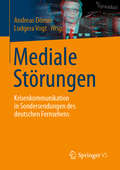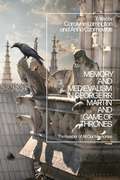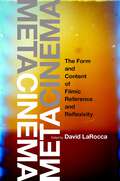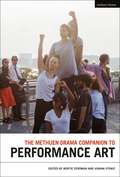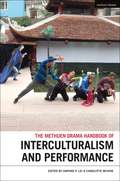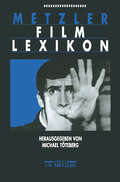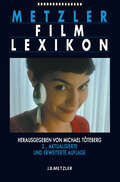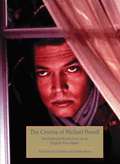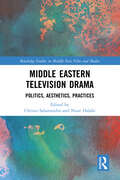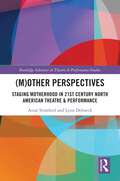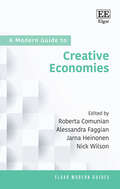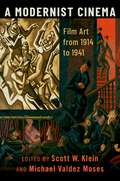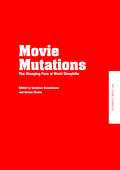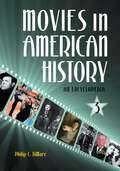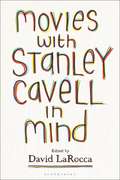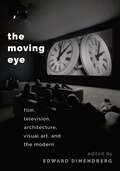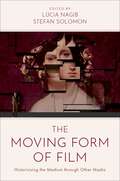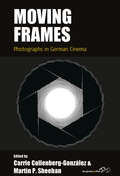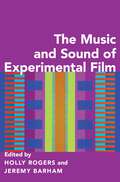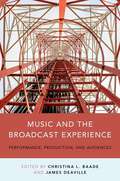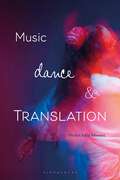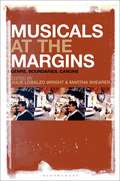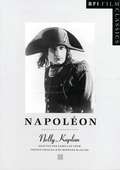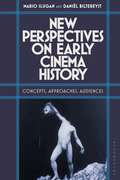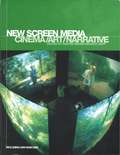- Table View
- List View
Mediale Störungen: Krisenkommunikation in Sondersendungen des deutschen Fernsehens
Sondersendungen des öffentlich-rechtlichen Fernsehens sind eine zentrale Institution der politischen Medienöffentlichkeit in Deutschland. Sie werden unter hohem Zeitdruck und mit Aufbietung geballter journalistischer Kompetenz produziert. Die Medienakteure sehen sie voller Stolz als imagebildende ‚Premiumprodukte‘ an. Für das Publikum markieren die Formate relevante Störungen gesellschaftlicher Normalität. Sie bieten zudem Einordnungen, Lösungsperspektiven sowie Vergemeinschaftung und Trost. Für politische Akteure sind die Sendungen eine relevante Bühne politischer Krisenkommunikation.
Memory and Medievalism in George RR Martin and Game of Thrones: The Keeper of All Our Memories
This book explores the connections between history and fantasy in George RR Martin's immensely popular book series 'A Song of Ice and Fire' and the international TV sensation HBO TV's Game of Thrones. Acknowledging the final season's foregrounding of the cultural centrality of history, truth and memory in the confrontation between Bran and the Night King, the volume takes full account of the TV show's conclusion in its multiple readings across from medieval history, its institutions and practices, as depicted in the books to the show's own particular medievalism. The topics under discussion include the treatment of the historical phenomena of chivalry, tournaments, dreams, models of education, and the supernatural, and the different ways in which these are mediated in Martin's books and the TV show. The collection also includes a new study of one of Martin's key sources, Maurice Druon's Les Rois Maudits, in-depth explorations of major characters in their medieval contexts, and provocative reflections on the show's controversial handling of gender and power politics.Written by an international team of medieval scholars, historians, literary and cultural experts, bringing their own unique perspectives to the multiple societies, belief-systems and customs of the 'Game of Thrones' universe, Memory and Medievalism in George RR Martin and Game of Thrones offers original and sparky insights into the world-building of books and show.
Metacinema: The Form and Content of Filmic Reference and Reflexivity
When a work of art shows an interest in its own status as a work of arteither by reference to itself or to other workswe have become accustomed to calling this move "meta." While scholars and critics have, for decades, acknowledged reflexivity in films, it is only in Metacinema, for the first time, that a group of leading and emerging film theorists join to enthusiastically debate the meanings and implications of the meta for cinema. In new essays on generative films, including Rear Window, 8 1/2, Holy Motors, Funny Games, Fight Club, and Clouds of Sils Maria, contributors chart, explore, and advance the ways in which metacinema is at once a mode of filmmaking and a heuristic for studying cinematic attributes. What results is not just an engagement with certain practices and concepts in widespread use in the movies (from Hollywood to global cinema, from documentary to the experimental and avant-garde), but also the development of a veritable and vital new genre of film studies. With more and more films expressing reflexivity, recursion, reference to other films, mise-en-abîme, seriality, and exhibiting related intertextual and intermedial traits, the time is overdue for the kind of capacious yet nuanced critical study found in Metacinema.
The Methuen Drama Companion to Performance Art (Methuen Drama Handbooks)
The Methuen Drama Companion to Performance Art offers a comprehensive guide to the major issues and interdisciplinary debates concerning performance in art contexts that have developed over the last decade. It understands performance art as an institutional, cultural, and economic phenomenon rather than as a label or object. Following the ever-increasing institutionalization and mainstreaming of performance, the book's chapters identify a marked change in the economies and labor practices surrounding performance art, and explore how this development is reflective of capitalist approaches to art and event production. Embracing what we perceive to be the 'oxymoronic status' of performance art-where it is simultaneously precarious and highly profitable-the essays in this book map the myriad gestures and radical possibilities of this extreme contradiction.This Companion adopts an interdisciplinary perspective to present performance art's legacies and its current practices. It brings together specially commissioned essays from leading innovative scholars from a wide range of approaches including art history, visual and performance studies, dance and theatre scholarship in order to provide a comprehensive and multifocal overview of the emerging research trends and methodologies devoted to performance art.
Methuen Drama Handbook of Interculturalism and Performance (Methuen Drama Handbooks)
The Methuen Drama Handbook of Interculturalism and Performance explores ground-breaking new directions and critical discourse in the field of intercultural theatre and performance while surveying key debates concerning interculturalism as an aesthetic and ethical series of encounters in theatre and performance from the 1960s onwards. The handbook's global coverage challenges understandings of intercultural theatre and performance that continue to prioritise case studies emerging primarily from the West and executed by elite artists. By building on a growing field of scholarship on intercultural theatre and performance that examines minoritarian and grassroots work, the volume offers an alternative and multi-vocal view of what interculturalism might offer as a theoretical keyword to the future of theatre and performance studies, while also contributing an energized reassessment of the vociferous debates that have long accompanied its critical and practical usage in a performance context. By exploring anew what happens when interculturalism and performance intersect as embodied practice, The Methuen Drama Handbook of Interculturalism and Performance offers new perspectives on a seminal theoretical concept still as useful as it is controversial. Featuring a series of indispensable research tools, including a fully annotated bibliography, this is the essential scholarly handbook for anyone working in intercultural theatre and performance, and performance studies.
Metzler Film Lexikon
Das Metzler Film Lexikon enthält rund 500 Klassiker des internationalen Films. Von der Stummfilmzeit bis zur Gegenwart werden Spielfilme besprochen, die Geschichte machten. Jeder Film wird mit Inhalt, künstlerischer Wertung, Angaben zur Form und seiner filmgeschichtlichen Bedeutung vorgestellt. Mit einer vollständigen Filmografie und ausführlichem Personen- und Werkregister.
Metzler Film Lexikon
Über 550 Filme von der Stummfilmzeit bis heute. Die Artikel informieren über Produktionsbedingungen, Form, Inhalt und Wirkung. Jedem Eintrag folgen Filmografien und Literaturangaben. Viele Abbildungen, verschiedene Register und ein ausführliches Glossar verleiten zum Schmökern. Ein Lexikon für Kinogänger und ausgewiesene Cineasten. Mit über 40 neu aufgenommenen Filmen, darunter: Being John Malkovich, BlackBox BRD, Breaking the Waves, Die fabelhafte Welt der Amelie, Fargo, Das Fest, Funny Games, Gegen die Wand, Good Bye Lenin, Hana-Bi, In the Mood for Love, Das Leben ist schön, Lola rennt, Matrix, Pulp Fiction, Titanic, Der Totmacher, Trainspotting, Die Unberührbare, Und täglich grüßt das Murmeltier.
Michael Powell: International Perspectives on an English Film-maker
The films of Michael Powell (1905-90) and Emeric Pressburger (1902-88), among them I Know Where I'm Going! (1945), A Matter of Life and Death (1947) and The Red Shoes (1948), are landmarks in British cinema, standing apart from the realist and comic mainstream with their highly stylised aesthetic and their themes of romantic longing and spiritual crisis. Powell and Pressburger are revered by film lovers and film-makers (Martin Scorsese has called them 'the most successful experimental film-makers in the world'). In this first-ever collection of essays on Powell, an international group of critics and scholars map out his film-making skills, providing new readings of individual films, analysing recurrent techniques and themes, and relating them to contemporary debates about gender, sexuality, nationality and cinematic spectacle. Powell, with and without Pressburger, emerges as a film-maker of lasting originality and significance.
Middle Eastern Television Drama: Politics, Aesthetics, Practices (Routledge Studies in Middle East Film and Media)
This monograph explores and investigates key issues facing Middle Eastern societies, including religion and sectarianism, history and collective memory, urban space and socioeconomic difference, policing and securitization, and gender relations. In the Middle East, television drama creators serve as public intellectuals who, with uncanny prescience, tell the world something. As this volume demonstrates, fictional television provides a crucial space for social and political debate in much of the region. Writing from a range disciplines—anthropology, communication, folklore, gender studies, history, and law— contributors include seasoned academics who have dedicated their careers to researching Middle Eastern media and emerging scholars who build on earlier work and introduce fresh perspectives. Together, they provide an invaluable overview of Middle Eastern serial television and their political impact, drawing examples from Afghanistan, Egypt, Iran, Syria, and Turkey. Bringing together a diverse range of academic perspectives, this book will be of key interest to students and scholars in media and communication studies, Middle Eastern Studies, and popular culture studies.
**Missing**: Staging Motherhood in 21st Century North American Theatre & Performance (Routledge Advances in Theatre & Performance Studies)
This anthology examines maternity in contemporary performance at the intersection of a wide range of topics from nationhood to mental health, queer parenting, embodied dramaturgy, cultural practice, and immigration. Across the breadth of these themes, we interrogate the cultural implications and politics of how we script, perform, receive, and define mothers, challenging many of the normalizing and patriarchal tropes associated with the mother-as-character. This book includes critical essays examining twenty-first century dramatic literature, first-hand ethnographic accounts of motherhood in practice, interviews, feminist manifestos, and artist reflections. In its deliberately curated variety, this collection seeks to resist homogeneity and offer instead a range of approaches to key questions: what versions of motherhood get staged, and why? And how do dramatic representations tell us about the role of mothers in our own fraught contemporary moment? This collection will be of great interest to those in academia who are teaching, researching, or studying in the fields of Theatre and Performance Studies, American Studies, and Feminist and Gender Studies.
A Modern Guide to Creative Economies (Elgar Modern Guides)
Bringing together a series of new perspectives and reflections on creative economies, this insightful Modern Guide expands and challenges current knowledge in the field. Interdisciplinary in scope, it features a broad range of contributions from both leading and emerging scholars, which provide innovative, critical research into a wide range of disciplines, including arts and cultural management, cultural policy, cultural sociology, economics, entrepreneurship, management and business studies, geography, humanities, and media studies.Designed to push the boundaries of understanding on the topic, this Modern Guide initially addresses definitional and methodological challenges, before offering new perspectives on the theory and practice of creative and cultural entrepreneurship, and exploring the role of networks and the importance of place and mobility. The book concludes by re-imagining creative economies, raising issues of inequality and justice, care and solidarity, and opportunities for value recognition, while providing new visions of inclusivity, cultural capability, and future development.A timely reflection on the importance of creative economies, this Modern Guide will be a critical read for students, scholars and policymakers working to support and develop future inclusive and sustainable creative economies.
A Modernist Cinema: Film Art from 1914 to 1941
In A Modernist Cinema, sixteen distinguished scholars in the field of the New Modernist Studies explore the interrelationships among modernism, cinema, and modernity. Focusing on several culturally influential films from Europe, America, and Asia produced between 1914 and 1941, this collection of essays contends that cinema was always a modernist enterprise. Examining the dialectical relationship between a modernist cinema and modernity itself, these essays reveal how the movies represented and altered our notions and practices of modern life, as well as how the so-called crises of modernity shaped the evolution of filmmaking. Attending to the technical achievements and formal qualities of the works of several prominent directors - Giovanni Pastrone, D. W. Griffith, Sergei Eisenstein, Fritz Lang, Alfred Hitchcock, F. W. Murnau, Carl Theodore Dreyer, Dziga Vertov, Luis Buñuel, Yasujiro Ozu, John Ford, Jean Renoir, Charlie Chaplin, Leni Riefenstahl, and Orson Welles - these essays investigate several interrelated topics: how a modernist cinema represented and intervened in the political and social struggles of the era; the ambivalent relationship between cinema and the other modernist arts; the controversial interconnection between modern technology and the new art of filmmaking; the significance of representing the mobile human body in a new medium; the gendered history of modernity; and the transformative effects of cinema on modern conceptions of temporality, spatial relations, and political geography.
Movie Mutations: The Changing Face of World Cinephilia
The idea of cinephilia is a crucial one for students of the cinema, but it is often associated with a bygone arthouse era. At the beginning of the twenty-first century, corporatism, public relations and bottom-line accounting seem to govern mainstream film-making. Formula-driven Hollywood blockbusters dominate the world marketplace. In times like these can 'the love of cinema' still flourish? In fact contemporary cinema is stunningly varied and rich. From Taiwan and Iran to Brazil and the Baltic states, it is flourishing and constantly mutating. Directors like Abbas Kiarostami, Hou Hsiao-hsien and Tsai Ming-liang are making extraordinary films that are the equal of the great classics, previously unrecognised works from the past are being discovered, and new definitions and boundaries of genres are being formulated. Even when this work is not widely distributed it is seen at film festivals on every continent and available on DVD; and it is being discussed in a proliferating number of print and web publications. Those who follow and share such work, as contributors from around the world demonstrate in this book, are forming new kinds of critical communities that enable significant exchanges between cultures at a time when other forces seem bent on keeping them mutually isolated. In contrast to any talk of 'the death of cinema', Movie Mutations pronounces the art form alive, well, and still developing in new and unforeseen directions. In weaving together transnational discussions and debates, Movie Mutations shows why the idea of cinephilia is just as relevant today as it ever was.
Movies in American History [3 volumes]: An Encyclopedia [3 volumes]
This provocative three-volume encyclopedia is a valuable resource for readers seeking an understanding of how movies have both reflected and helped engender America's political, economic, and social history.Movies in American History: An Encyclopedia is a reference text focused on the relationship between American society and movies and filmmaking in the United States from the late 19th century through the present. Beyond discussing many important American films ranging from Birth of a Nation to Star Wars to the Harry Potter film series, the essays included in the volumes explore sensitive issues in cinema related to race, class, and gender, authored by international scholars who provide unique perspectives on American cinema and history. Written by a diverse group of distinguished scholars with backgrounds in history, film studies, culture studies, science, religion, and politics, this reference guide will appeal to readers new to cinema studies as well as film experts. Each encyclopedic entry provides data about the film, an explanation of the film's cultural significance and influence, information about significant individuals involved with that work, and resources for further study.
Movies with Stanley Cavell in Mind
In Movies with Stanley Cavell in Mind, some of the scholars who have become essential for our understanding of Stanley Cavell's writing on film gather to use his landmark contributions to help us read new films-from Hollywood and elsewhere-that exist beyond his immediate reach and reading. In extending the scope of Cavell's film philosophy, we naturally find ourselves contending with it and amending it, as the case may be. Through a series of interpretive vignettes, the group effort situates, for the expert and novitiate alike, how Cavell's writing on film can profitably enrich one's experience of cinema generally and also inform how we might continue the practice of serious philosophical criticism of specific films mindful of his sensibility. The resulting conversations between texts, traditions, disciplines, genres, and generations creates propitious conditions for discovering what it means to watch and listen to movies with Stanley Cavell in mind.
The Moving Eye: Film, Television, Architecture, Visual Art and the Modern
Once the province of film and media scholars, today the moving image is of broad concern to historians of art and architecture and designers of everything from websites to cities. As museums and galleries devote increasing space to video installations which no longer presuppose a fixed viewer, urban space becomes envisioned and planned through "fly throughs," and technologies such as GPS add data to the experience of travel, moving images have captured the attention of geographers and scholars across the humanities and social sciences. Their practice of "mobility studies" is remaking how we understand a contemporary world in relentless motion. Media theorist and historian Anne Friedberg (1952-2009) was among the first practitioners of visual studies to theorize the experience of vision in motion. Her books have become key points of reference in the discussion of the windows that frame images and the viewers in motion who perceive them. Although widely influential beyond her own discipline, Friedberg's work has never been the subject of an extended study. The Moving Eye: Film, Television, Architecture, Visual Art and the Modern gathers together essays by renowned thinkers in media studies, art history, architecture, and museum studies to consider the rich implications of her work for understanding film and video, new media, visual art, architecture, exhibition design, urban space, and virtual reality. Ranging from early cinema, to works by Le Corbusier, Sergei Eisenstein, Gordon Matta-Clark, and Pierre Huyghe, to theories of the image in motion informed by psychoanalysis, theories of the public sphere, and animal studies, each of the nine essays in the book advances the lines of inquiry commenced by Friedberg.
The Moving Form of Film: Historicising the Medium through Other Media
The Moving Form of Film: Historicizing the Medium through Other Media charts the ways in which crossing borders between film and other arts and media can provide an encompassing, inclusive, and non-teleological understanding of film history. Evolutionary narratives of cinema have traditionally adopted the Second World War as a watershed that separates 'classical' Hollywood films from 'modern' European productions, a scheme that subjects the entire world to the cinematic history of two hegemonic centres. In turn, histories of film as a technological medium have focused on the specificity of cinema as it gradually separated from the other art and medial forms - theatre, dance, fairground spectacle, painting, literature, still photography and other pre-cinematic modes. Taking an ambitious step forward with relation to these approaches, this book focuses on the fluid quality of the film form by exploring an array of exciting and often neglected artistic expressions worldwide as they compare and interconnect films across temporal, geographical, and cultural borders. By observing the ebb and flow of film's contours within the bounds of other artistic and medial expressions, the chapters aspire to establish a flexible historical platform for the moving form of film, posited, from production to consumption, as a transforming and transformative medium.
Moving Frames: Photographs in German Cinema (Film Europa #26)
As the building blocks of moving pictures, photographs have played an integral role in cinema since the dawn of the medium—a relationship that has grown more complexly connected even as the underlying technologies continue to evolve. Moving Frames explores the use of photographs in German films from Expressionism to the Berlin School, addressing the formal and narrative roles that photographs play as well as the cultural and historical contexts out of which these films emerged. Looking beyond and within the canon, the editors gather stimulating new insights into the politics of surveillance, resistance, representation, and collective memory functioning through photographic rupture and affect in German cinema.
The Music and Sound of Experimental Film
This book explores music/sound-image relationships in non-mainstream screen repertoire from the earliest examples of experimental audiovisuality to the most recent forms of expanded and digital technology. It challenges presumptions of visual primacy in experimental cinema and rethinks screen music discourse in light of the aesthetics of non-commercial imperatives. Several themes run through the book, connecting with and significantly enlarging upon current critical discourse surrounding realism and audibility in the fiction film, the role of music in mainstream cinema, and the audiovisual strategies of experimental film. The contributors investigate repertoires and artists from Europe and the USA through the critical lenses of synchronicity and animated sound, interrelations of experimentation in image and sound, audiovisual synchresis and dissonance, experimental soundscape traditions, found-footage film, re-mediation of pre-existent music and sound, popular and queer sound cultures, and a diversity of radical technological, aesthetic, tropes in film media traversing the work of early pioneers such as Walther Ruttmann and Len Lye, through the mid-century innovations of Norman McLaren, Stan Brakhage, Lis Rhodes, Kenneth Anger, Andy Warhol, and studio collectives in Poland, to latter-day experimentalists John Smith and Bill Morrison, as well as the contemporary practices of Vjing.
Music and the Broadcast Experience: Performance, Production, and Audiences
Music and the Broadcast Experience explores the complex ways in which music and broadcasting have developed together throughout the twentieth and into the twenty-first centuries. It brings into dialogue researchers working in media and music studies; explores and develops crucial points of contact between studies of music in radio and music in television; and investigates the limits, persistence, and extensions of music broadcasting in the Internet era. The book presents a series of case studies that address key moments and concerns in music broadcasting, past and present, written by leading scholars in the field, who hail from both media and music studies. Unified by attentiveness both to musical sound and meaning and to broadcasting structures, practices, audiences, and discourses, the chapters in this collection address the following topics: the role of live orchestral concerts and opera in the early development of radio and their relation to ideologies of musical uplift; the relation between production culture, music, and television genre; the function of music in sponsored radio during the 1930s; the fortunes of musical celebrity and artistic ambition on television; questions of music format and political economy in the development of online radio; and the negotiation of space, community, and participation among audiences, online and offline, in the early twenty-first century. The collection's ultimate aim is to explore the usefulness and limitations of broadcasting as a concept for understanding music and its cultural role, both historically and today.
Music, Dance and Translation
How is music affected by its translation, interpretation and adaptation with, through, and by dance? How might notation of dance and music act as a form of translation? How does music influence the creation of dance? How might dance and music be understood to exchange and transfer their content, sense and process during both the creative process and the interpretative process? Bringing together chapters that explore theory and practice, this book questions the process and role translation has to play in the context of music and dance. It provides a range of case studies across this interdisciplinary field, and is not restricted by genre, style or cultural location. As one of very few volumes to explore translation in relation to music and to overtly tackle this topic in terms of dance, it moves the argument from a broad notion of text and translation, to think critically about the sound and movement arts of music and dance, using translation as a model to better understand the collaboration of these art forms.
Musicals at the Margins: Genre, Boundaries, Canons
But is it a musical? This question is regularly asked of films, television shows and other media objects that sit uncomfortably in the category despite evident musical connections. Musicals at the Margins argues that instead of seeking to resolve such questions, we should leave them unanswered and unsettled, proposing that there is value in examining the unstable edges of genre. This collection explores the marginal musical in a diverse range of historical and global contexts. It encompasses a range of different forms of marginality including boundary texts (films/media that are sort of/not quite musicals), musical sequences (marginalized sequences in musicals; musical sequences in non-musicals), music films, musicals of the margins (musicals produced from social, cultural, geographical, and geopolitical margins), and musicals across media (television and new media). Ultimately these essays argue that marginal genre texts tell us a great deal about the musical specifically and genre more broadly.
Napoleon (BFI Film Classics)
Abel Gance's film, restored through the efforts of Kevin Brownlow, is discussed here by Nelly Kaplan, who was Gance's assistant and then, later, with such productions as 'The Pirate's Fiancee', a film director in her own right. Each volume in the 'BFI Film Classics' series contains a personal commentary on the film, a brief production history and a detailed filmography.
New Perspectives on Early Cinema History: Concepts, Approaches, Audiences
In this book, editors Mario Slugan and Daniël Biltereyst present a theoretical reconceptualization of early cinema. To do so, they highlight the latest methods and tools for analysis, and cast new light on the experience of early cinema through the application of these concepts and methods.The international host of contributors evaluate examples of early cinema across the globe, including The May Irwin Kiss (1896), Un homme de têtes (1900), The Terrible Turkish Executioner (1904) and Tom Tom the Piper's Son (1905). In doing so, they address the periodization of the era, emphasizing the recent boon in the availability of primary materials, the rise of digital technologies, the developments in new cinema history, and the persistence of some conceptualizations as key incentives for rethinking early cinema in theoretical and methodological terms. They go on to highlight cutting-edge approaches to the study of early cinema, including the use of the Mediathread Platform, the formation of new datasets with the help of digital technologies, and exploring the early era in non-western cultures. Finally, the contributors revisit early cinema audiences and exhibition contexts by investigating some of the earliest screenings in Denmark and the US, exploring the details of black cinema going in Harlem, and examining exhibition practices in Germany.
New Screen Media: Cinema/Art/Narrative
This text presents the work of cultural theorists and philosophers of new media, together with the perspectives of artists experimenting with different interactive models critically examining their own practice. The book proposes the use of new critical tools for discussing new media forms.
